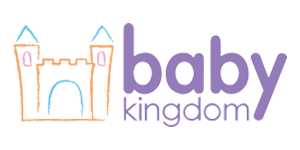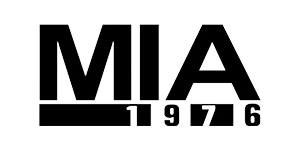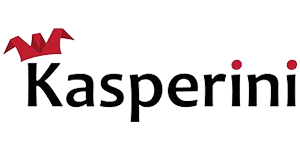Building Websites with WordPress (For Introduction to WordPress Development)
WordPress has become the go-to platform for building websites due to its flexibility, scalability, and ease of use. Whether you're creating a personal blog or a complex business site, WordPress provides a reliable foundation that caters to any industry or need. Its user-friendly interface allows site owners to manage and update content without requiring advanced technical skills.
One of the greatest strengths of WordPress is its vast library of themes and plugins. These tools enable developers to create custom functionality, enhancing everything from site performance to user engagement. WordPress is also SEO-friendly, which means it helps improve your site’s visibility right from the start.
With endless possibilities for customization and a powerful content management system, WordPress makes website development efficient and future-proof. It offers the flexibility to design a site that matches your business goals and the ability to scale as those goals evolve.
If you’re looking to build a website that is both easy to manage and capable of delivering a strong online presence, WordPress is the platform to consider.
Different Types of Websites You Can Create with WordPress
WordPress is an incredibly versatile platform, making it suitable for a wide range of website types. Whether you’re running a small personal project or a large enterprise, WordPress can handle it all. Here are some common types of websites built with WordPress:
-
Business Websites
WordPress is ideal for creating professional websites that showcase services, products, and company information. It offers a wide selection of themes tailored for businesses, with features like contact forms, appointment booking, and integration with popular marketing tools.
-
Ecommerce Websites
With the WooCommerce plugin, WordPress can be transformed into a powerful online store. From product catalogs to payment gateways, WordPress allows businesses to sell physical and digital products with ease, offering a seamless shopping experience for customers.
-
Blogs and News Websites
WordPress started as a blogging platform and still excels in this area. It’s a top choice for bloggers, journalists, and content creators who need an easy-to-manage platform for publishing articles, managing comments, and engaging with readers.
-
Portfolio Websites
Freelancers, artists, and photographers use WordPress to create visually appealing portfolios. The platform’s customizable themes and media support allow users to display their work beautifully, with options for galleries and project showcases.
-
Membership and Learning Websites
WordPress supports membership platforms and eLearning sites, offering subscription models, user accounts, and course management features through various plugins.
From simple blogs to complex ecommerce platforms, WordPress is equipped to develop any type of website.
Breaking Down the WordPress Development Process
Developing a website using WordPress follows a structured process designed to ensure that the final product is both functional and visually appealing. Here’s an in-depth look at the key stages involved in creating a WordPress site, from initial planning to post-launch maintenance.
-
Discovery and Planning
Every successful WordPress project begins with discovery and planning. This is the foundation upon which the entire website will be built. During this phase, developers and clients collaborate to understand the project’s objectives, audience, and desired features. This can involve researching competitors, gathering content requirements, and identifying key functionality, such as whether the site will need eCommerce capabilities, a blog, or contact forms. The planning stage also includes creating wireframes or site maps to outline the structure and flow of the site. Clear planning minimizes delays and ensures that the project stays aligned with the original vision.
-
Design and Theme Selection
With a roadmap in place, the next step is to design the site’s look and feel. WordPress offers thousands of pre-made themes that can be customized to suit any business, but many businesses opt for a custom design to stand out from the competition. Whether using a pre-built theme or crafting a bespoke design, the focus is on creating a layout that is not only aesthetically pleasing but also user-friendly. Key design elements include the website’s color scheme, typography, and overall layout. The design should reflect the brand’s identity while offering visitors an intuitive and enjoyable browsing experience.
-
Development and Customization
Once the design is approved, the development phase begins. Developers use WordPress’s core software as the base and build out the necessary functionality. This could involve setting up a blog, integrating a shopping cart system, or developing custom plugins for specific features. During this phase, the chosen theme is implemented, and the website’s back-end is configured for smooth operation. Customization is key here. Every business has unique needs, so the website’s functionality should align with those requirements, whether it's a portfolio, online store, or service booking system.
-
Content Integration
With the site’s framework in place, content integration begins. This includes uploading images, adding text, embedding videos, and creating galleries. WordPress’s easy-to-use content management system allows developers and clients alike to add or edit content without the need for technical expertise. Ensuring that all content is optimized for SEO during this phase is essential for maximizing the website’s visibility on search engines.
-
Testing and Launch
Before the website is launched, it must undergo rigorous testing. Developers check the site for responsiveness across all devices, browser compatibility, and overall performance, including site speed and loading times. Any bugs or issues are addressed to ensure the site functions flawlessly. User experience testing ensures that navigation is smooth and that visitors can easily find the information or products they’re looking for. Once testing is complete and the client gives the green light, the website goes live, marking the end of the development process.
-
Ongoing Maintenance and Support
A website is never truly finished. After launch, regular maintenance is necessary to keep the site secure and up to date. This includes updating plugins, backing up data, and performing security checks to prevent vulnerabilities. As businesses grow and evolve, websites often require updates and new features, making ongoing support an essential part of the WordPress development process.
Challenges You May Face with WordPress Development
While WordPress is an incredibly popular and flexible platform, it does come with its own set of limitations and challenges that users should be aware of.
-
Security Vulnerabilities
WordPress’s popularity makes it a target for hackers. Since it’s an open-source platform, new vulnerabilities can surface frequently, especially if plugins or themes aren’t kept up to date. Regular security updates and the installation of security plugins are necessary to keep a WordPress site safe from threats. Without proper maintenance, a WordPress website can become susceptible to malware or attacks.
-
Plugin Overload
One of the strengths of WordPress is the extensive library of plugins that allow users to add various features and functions. However, using too many plugins can slow down your site, cause compatibility issues, or even lead to security risks. Not all plugins are maintained or updated by their developers, which can lead to functionality problems or create entry points for cyber threats. It’s important to carefully select and regularly monitor the plugins in use.
-
Performance Issues
WordPress websites, especially those with a large number of images, videos, or plugins, can experience slow load times. This can negatively impact the user experience and SEO rankings. Optimizing your site’s performance requires proper hosting, regular caching, and careful management of media and plugins.
-
Customization Limitations for Non-Developers
While WordPress is user-friendly, advanced customization can be difficult without coding knowledge. Some specific features or designs require the expertise of a developer, which can lead to higher costs for custom solutions or troubleshooting.
Best Practices for WordPress Website Maintenance
Once a WordPress website is live, it requires regular maintenance and support to ensure smooth performance, security, and functionality. Here are the key aspects of ongoing maintenance and support for WordPress sites:
-
Regular Software Updates
WordPress frequently releases updates for its core software, plugins, and themes. Keeping these updated is crucial for security and performance. Outdated software can create vulnerabilities or lead to compatibility issues, so regular checks and updates are essential.
-
Security Monitoring
Security threats such as hacking attempts, malware, and phishing attacks are constant risks for WordPress websites. Implementing security plugins, monitoring for suspicious activity, and running regular security scans can help detect and prevent threats. It's important to enable features like two-factor authentication and regularly update security protocols.
-
Backup Management
Regular backups ensure that your website’s data can be restored in case of any issues like crashes, cyberattacks, or accidental data loss. Scheduling automated backups and storing them securely offsite ensures the website can be restored quickly without data loss.
-
Performance Optimization
A well-maintained website should load quickly and perform smoothly. Maintenance tasks like image optimization, database cleanup, and caching help keep the site running efficiently. Poor performance can lead to a bad user experience and negatively impact SEO rankings.
-
Broken Link and Error Checks
Broken links and 404 errors can frustrate visitors and harm your SEO. Regularly scanning for broken links and fixing them ensures that users can navigate your site without issues. Keeping an eye on server errors and correcting them promptly is equally important.
-
Plugin and Theme Management
While plugins enhance functionality, too many or poorly coded plugins can slow down your site. Ongoing support involves managing, updating, and deactivating plugins that are no longer in use. This also applies to themes—whether custom-built or pre-made, themes need regular updates to stay compatible with the latest WordPress version.
-
SEO Monitoring
SEO performance doesn’t stop after launch. Regular updates to content, monitoring keyword performance, and addressing any issues that could impact search rankings are important. This includes optimizing the site for speed, mobile responsiveness, and ensuring there are no duplicate content or metadata issues.
-
Content Management and Updates
As businesses evolve, so does the content on a website. Ongoing support includes updating pages, adding new blog posts, uploading images, and keeping the site’s content fresh and relevant.
-
Uptime Monitoring
Ongoing support involves tracking your website’s uptime to ensure it's accessible at all times. Downtime can negatively affect user experience and credibility. Monitoring services can alert administrators to resolve issues quickly.
Emerging Trends in WordPress Development
The world of WordPress development is constantly evolving, with new trends and innovations emerging regularly. Staying updated on these developments is crucial for building modern, high-performing websites. A WordPress website development firm can help businesses leverage the latest advancements to create seamless, user-friendly, and secure websites. Here are some of the latest trends shaping WordPress development today:
-
Full Site Editing (FSE)
WordPress’s Full Site Editing feature is revolutionizing how websites are built. With FSE, users can now customize not only the content within posts and pages but also global elements like headers, footers, and sidebars—directly from the block editor. This makes website design more intuitive and flexible for both developers and non-technical users.
-
Block-Based Themes
Block-based themes, also known as block themes, are gaining popularity with the rise of Full Site Editing. These themes are designed entirely with blocks, allowing developers and designers to build websites with modular components that can be customized more easily than traditional themes.
-
Headless WordPress
Headless WordPress is becoming a popular solution for developers seeking more flexibility in front-end design. In a headless setup, WordPress functions solely as a content management system (CMS), while the front-end of the website is built using frameworks like React or Vue.js. This allows for faster websites and more dynamic user experiences.
-
Progressive Web Apps (PWAs)
More developers are turning WordPress websites into Progressive Web Apps. PWAs offer an app-like experience for users, with faster load times, offline access, and push notifications. Integrating PWA functionality into WordPress sites can improve engagement and user retention.
-
Artificial Intelligence (AI) Integration
AI-powered tools are making their way into WordPress development, from chatbots for customer support to content generation plugins that suggest SEO improvements or automate content updates. AI is improving website functionality, personalization, and content management.
-
Improved Page Speed Optimization
Page speed has always been important, but it’s now a critical factor for both user experience and SEO rankings. WordPress developers are focusing on speed optimization techniques, such as lazy loading, image compression, and minimizing external scripts, to enhance website performance.
-
Voice Search Optimization
With the growing use of voice-activated devices, optimizing WordPress websites for voice search is becoming essential. This involves structuring content in a way that answers common user queries and using conversational language that aligns with voice search behavior.
-
Advanced WooCommerce Features
The eCommerce sector continues to expand, and WordPress’s WooCommerce plugin is keeping pace with new features like AI-driven product recommendations, mobile-first designs, and seamless payment gateway integrations, making online stores more powerful and user-friendly.

 Paul Wehrle, President
Paul Wehrle, President Rated 4.9/5 stars on GoodFirms
Rated 4.9/5 stars on GoodFirms




























